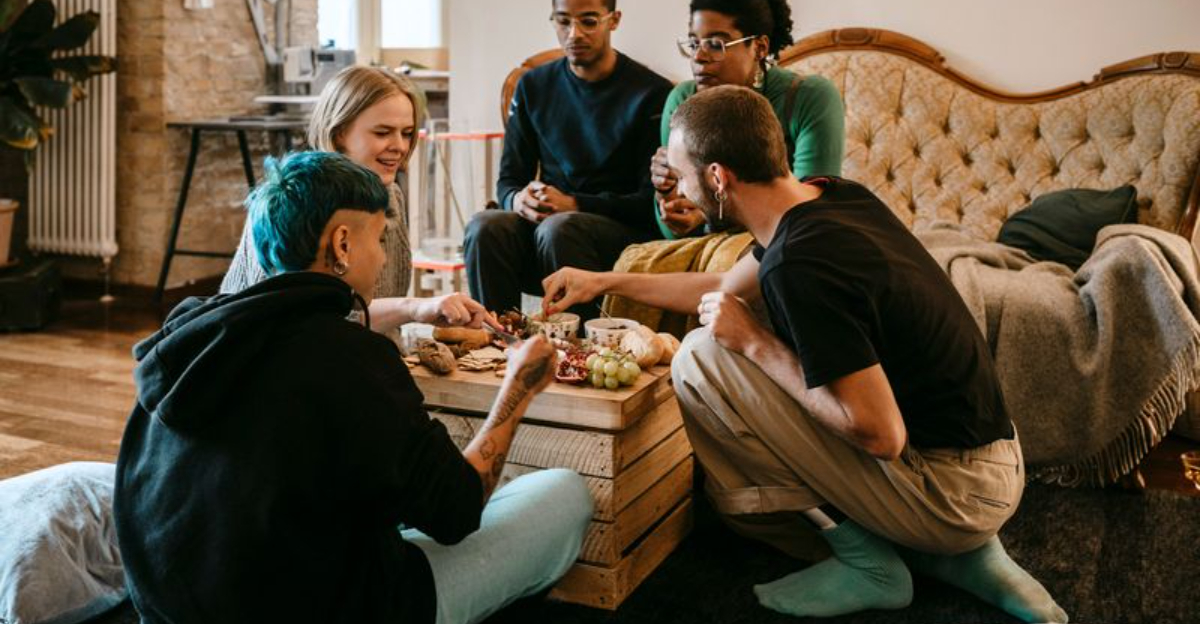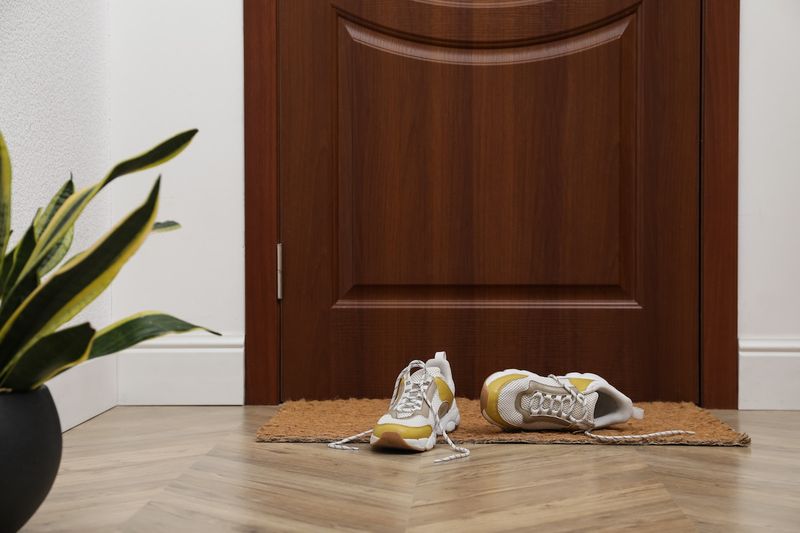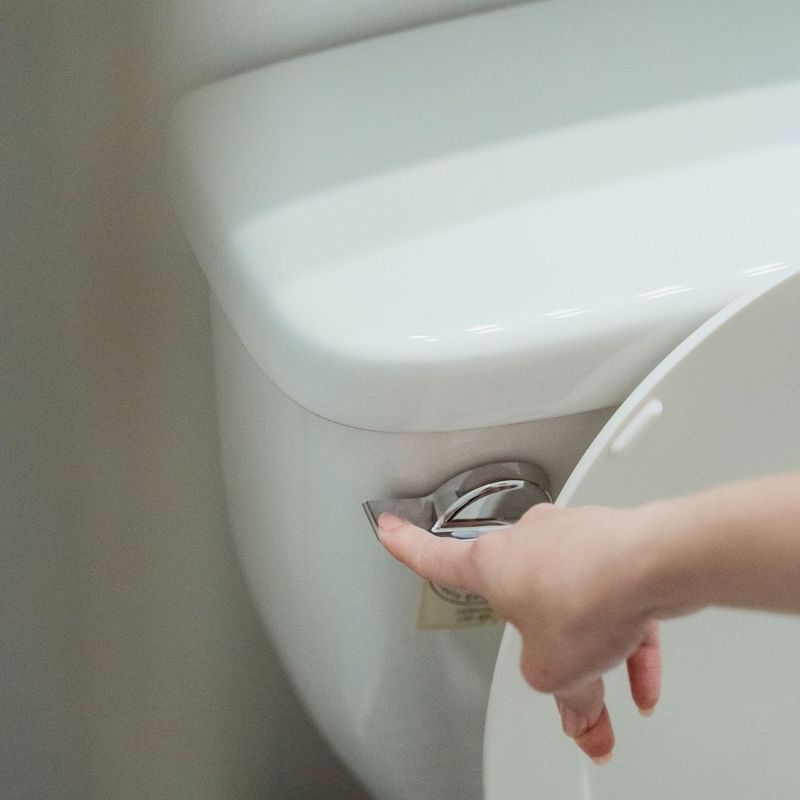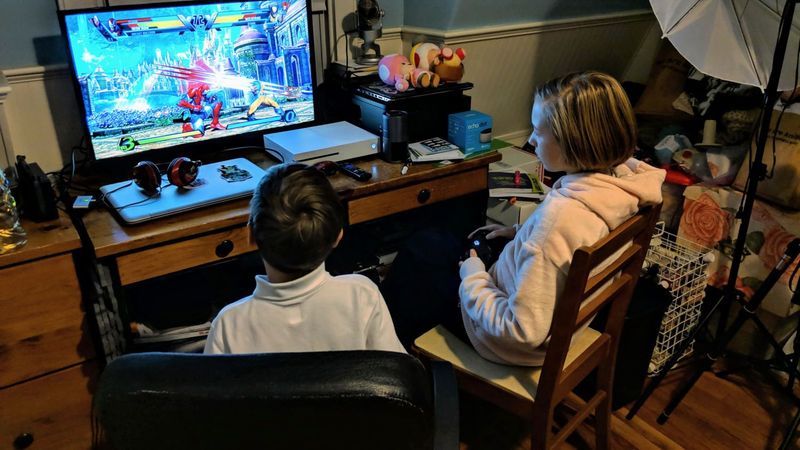15 Weird Rules You Had at a Friend’s House That Made No Sense

Ever walked into a friend’s house and immediately felt like you needed a survival guide? Some households had rules so bizarre, they made you question reality—like stepping into a parallel universe where juice was contraband and sitting on the “fancy couch” was a criminal offense.
From the classic “No shoes, no socks, and no bare feet” paradox (wait… so how do I exist?) to the “You can’t flush after 9 PM” rule (because apparently, the toilet doubles as an alarm system), these childhood house rules were both baffling and hilarious.
And let’s not forget the unspoken food laws—like the house where ketchup was banned, or the one where only off-brand cereal was allowed (no, Mom, it does NOT taste the same!).
So grab your nostalgia goggles and prepare for a trip down memory lane as we explore 15 of the strangest, funniest, and most head-scratching house rules from childhood sleepovers!
1. No Shoes in the House… But Also No Socks or Bare Feet

Ever had to question the laws of physics at a friend’s house? Imagine being told you can’t wear shoes, but also can’t go barefoot or even sport socks. So, what’s next? Hovering, perhaps?
It felt like being in a bizarre game of “the floor is lava,” where every step required strategic planning. You’d find yourself awkwardly perched on the edge of the couch, wondering if your feet had somehow become a weapon of mass destruction.
This puzzling rule often led to comical situations where you’d shuffle around like a penguin, trying not to offend the carpet with your bare existence. Perhaps the floors were the centerpiece of their decor, akin to a sacred artifact that must remain untouched by human feet. Whatever the reason, it left you tiptoeing through your playdate, hoping not to get caught in the crossfire of this odd regulation.
2. No Saying the Word “Fart”

In some households, the word “fart” was deemed too crude, and you were urged to use alternative terms like “toot,” “fluff,” or the particularly whimsical “bunny burp.” Imagine trying to suppress giggles as you seriously said, “I think I just had a bunny burp!” It turned an otherwise mundane bodily function into a quirky, private joke among friends.
The rule seemed tailored to maintain a certain level of etiquette, but it often resulted in fits of laughter, as everyone struggled to adhere to this linguistic dance. You’d find yourself inventing new euphemisms every time, adding a comedic twist to the air-clearing antics.
This rule wasn’t just about avoiding a word; it was about embracing creativity in the most unexpected ways, leaving you with a bank of euphemisms that could rival a thesaurus. Who knew potty humor could be so posh?
3. No Drinking Anything but Water—Even With Dinner

Imagine sitting down for dinner, and your mouth waters at the thought of a refreshing drink to accompany your meal. But alas, you’re met with only water—no juice, no soda, not even a splash of milk. This rule felt like a culinary desert, where you were left to navigate your meal without the aid of a flavorful oasis.
Some families believed water was the healthiest option, turning the dinner table into a hydration station. It was like being part of a wellness retreat you never signed up for, where every meal became an exercise in disciplined sipping.
The lack of variety might have seemed sensible to some, but for guests, it was often an exercise in restraint, as you resisted the urge to ask for even a small drop of something sweet. Who knew hydration could be so high-stakes?
4. Can’t Open the Fridge Without Permission

Visiting some friends’ homes felt like entering a culinary Fort Knox, where the fridge was off-limits unless you had express permission. It was as if the fridge contained top-secret snacks or held the mysteries of the universe behind its chilled doors.
You’d stand awkwardly near the kitchen, debating the merits of thirst versus the courage needed to ask. Heaven forbid you took a peek without approval—a snack raid could lead to a house-wide scandal!
This rule instilled a sense of reverence for the humble fridge, turning it into a beacon of authority in the household hierarchy. You learned to choose your battles wisely, waiting for the perfect moment to request a glass of milk or a nibble of cheese, lest you disturb the peace of this culinary commandment. Who knew sustenance required such strategic finesse?
5. No Talking at the Dinner Table

Picture this: a family dinner where silence reigns supreme, and the only sounds are the clinking of cutlery and the occasional awkward cough. Some households enforced a strict “no talking” policy at the dinner table, making every meal feel like a silent retreat.
Breaking the silence was akin to disturbing a sacred ritual, as the mere whisper could earn you a disapproving glare. It was a test of endurance, where you communicated through expressive eyebrow raises and subtle nods, mastering the art of non-verbal interaction.
Though it encouraged mindfulness in eating, this rule often left guests bewildered, wondering if they’d wandered into a monastery instead of a family home. It taught the value of silence, but also made you appreciate the lively chatter of your own dinner table. Who knew dining could double as meditation?
6. Every Visitor Had to Say “Yes, Sir” and “Yes, Ma’am”

Walking into certain homes felt like enlisting in the military, where “yes, sir” and “yes, ma’am” were the required greetings for everyone, even if the person was just slightly older than you. It was like stepping into a world where respect and rank went hand in hand, and informal greetings were strictly off the table.
The rule instilled a sense of discipline, where every interaction was a lesson in respect and formality. It was like being part of a grand societal experiment, where hierarchy and etiquette were king.
While it taught manners, it also brought a humorous edge as you had to remind yourself not to salute. This rule left you pondering what rank you’d hold in this at-home army and whether you’d ever achieve the rank of “private friend.” Who knew a simple greeting could carry such weight?
7. No Flushing the Toilet at Night

Imagine the internal debate as you stand in the bathroom late at night, wondering whether to flush or leave your business as a morning surprise. Some families imposed a strict “no flushing at night” rule to prevent waking others with the thunderous roar of plumbing.
It turned a routine task into a high-stakes decision, where you weighed your options with the seriousness of a chess grandmaster. You’d tiptoe back to bed, hoping your nocturnal contribution wouldn’t be discovered until the morning.
This rule was a lesson in stealth and strategy, teaching you to navigate the bathroom like a seasoned spy. It added a layer of excitement to sleepovers, leaving you to ponder the mystery of the unflushable toilet. Who knew bathroom etiquette could venture into the realm of the covert?
8. No Playing Video Games with “Violence” (Even If It Was Just Mario)

In some homes, even the most innocent video games were seen as too aggressive, prompting bans on anything with a hint of competition or combat—even if it was just Mario jumping on Goombas. It was a world where Candy Land reigned supreme, and pixelated brawls were strictly forbidden.
You’d suggest a game of Super Smash Bros., only to be met with a firm, “We don’t allow violent games.” It was like being in a sanctuary of peace, where every pixel had to be pure and every game had to be gentle.
This rule encouraged creativity in play, as you turned to board games and outdoor activities to fill the void left by banned consoles. It was a lesson in finding joy and entertainment minus the digital explosions. Who knew fun could be found in such peaceful pursuits?
9. No TV After 6 PM—Even on Weekends

Picture the disappointment of settling down for some evening TV, only to be told that the screen goes dark at 6 PM, weekdays and weekends alike. It was a household rule that turned prime time into story time, where books and board games claimed the night.
This rule was like being on a media diet, where screen time was rationed with military precision. You’d find yourself engaging in alternative forms of entertainment, as you explored the art of conversation or the thrill of a good book.
Though initially frustrating, it led to a deeper appreciation for non-digital diversions, turning evenings into a canvas for creativity and connection. It was a reminder that there’s more to life than the glow of a TV screen. Who knew family time could flourish in such unplugged moments?
10. No Saying “Shut Up”

In some homes, the phrase “shut up” was seen as a verbal sin, on par with the worst expletives. Uttering it could spark a lecture on respect that could last longer than your playdate. It was a rule where silence was golden, and words were chosen with the care of a poet.
This linguistic decree led to creative alternatives like “please hush” or “silence, if you please,” adding a touch of theatrical flair to everyday conversations. It was a constant exercise in politeness, where even the slightest slip-up could lead to a diplomatic crisis.
While it encouraged respectful dialogue, it also added a layer of levity, as you navigated the conversational minefield with wit and whimsy. Who knew diplomacy could be honed in the humble halls of a friend’s home?
11. Can’t Use the “Fancy” Towels

Picture finishing up in the bathroom, reaching for a towel, only to hear a frantic, “NOT THOSE!” Some households had towels that were strictly for show, leaving you dripping with water and confusion. It was a rule that turned hand-drying into a high-stakes quest for the acceptable towel.
You learned to scan the bathroom for clues, swiftly distinguishing between decorative and functional towels with the skill of a detective. It was a game of bathroom bingo, where using the wrong towel could lead to a minor household scandal.
This rule was a lesson in aesthetics over practicality, where even the simplest tasks had layers of complexity. It left you appreciating the art of interior design, even if it was at the expense of dry hands. Who knew towels could hold such decorative power?
12. The “Weird” Snack Offerings

Imagine your excitement at snack time, only to be offered a selection of treats that looked like they came from a health food experiment. Celery with mustard, carrot sticks with mayonnaise, or some mysterious homemade “healthy” concoction—it was a snack world where kale chips ruled supreme.
Each visit was a culinary adventure, where you bravely explored the uncharted territories of flavor. While some offerings sparked curiosity, others were met with polite nibbles and a longing for familiar treats. It was like being on a food safari, navigating through the jungles of health-conscious snacking.
This rule expanded your palate, teaching you to appreciate the boldness of trying new things, even if they came with a side of raised eyebrows. Who knew a snack could be an educational experience in the world of nutrition?
13. No Doors Closed—Ever

For some, privacy was a luxury that came second to an open-door policy that applied to all rooms, even the bathroom. It was as if closed doors were portals to another dimension, where secrets and mysteries lurked.
You’d carry out your activities with an audience, mastering the art of discretion and modesty in every move. Privacy was a rare commodity, as you navigated this glass castle with care.
This rule was a lesson in transparency and openness, where nothing was hidden from sight or sound. While it fostered communication, it also left you longing for the solitude of a closed door. Who knew open doors could reveal so much about a family’s ethos?
14. No Playing in Certain Rooms

In some homes, certain rooms were off-limits, turning the living space into a minefield of forbidden zones. “You can’t go in the living room,” or “Stay out of the basement,” were common refrains, leaving little room for exploration.
You’d find yourself confined to a designated play area, gazing longingly at the plush couches and curious corners you couldn’t explore. It was a test of restraint and creativity, as you made the most of limited space.
This rule was a lesson in boundaries and respect, teaching you the value of personal space and property. While it kept things orderly, it also left you dreaming of the adventures that lay beyond those invisible lines. Who knew spatial awareness could be such a vital life skill?
15. The Super Early Bedtime (Even for Guests)

Imagine the disappointment of a sleepover cut short by an early bedtime decree. In some homes, even guests were subject to a strict “lights out” policy, often as early as 8 PM. It was like being part of a covert operation, where whispering under the covers felt like breaking the rules.
You’d lie awake, plotting the next day’s adventures as you stared at the ceiling, wondering if this was a test of endurance or just another quirky family tradition. The rule turned sleepovers into quiet retreats, where the thrill of staying up late was a forbidden fruit.
While it ensured you were well-rested, it also added an element of rebellion to the night, as hushed giggles and secret whispers filled the darkened room. Who knew bedtime could be such a battleground for independence?
